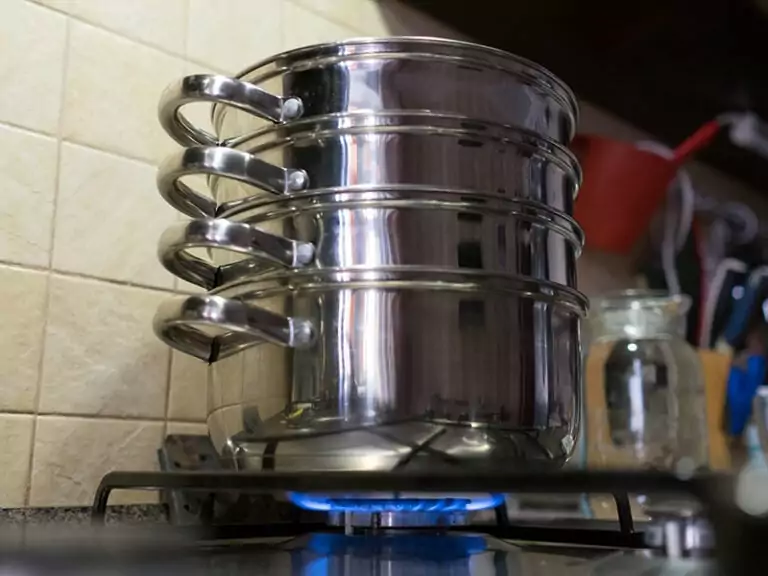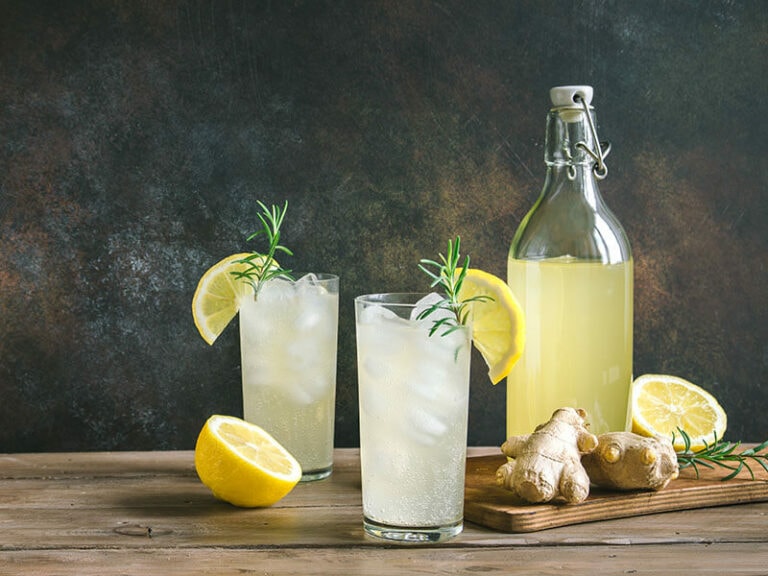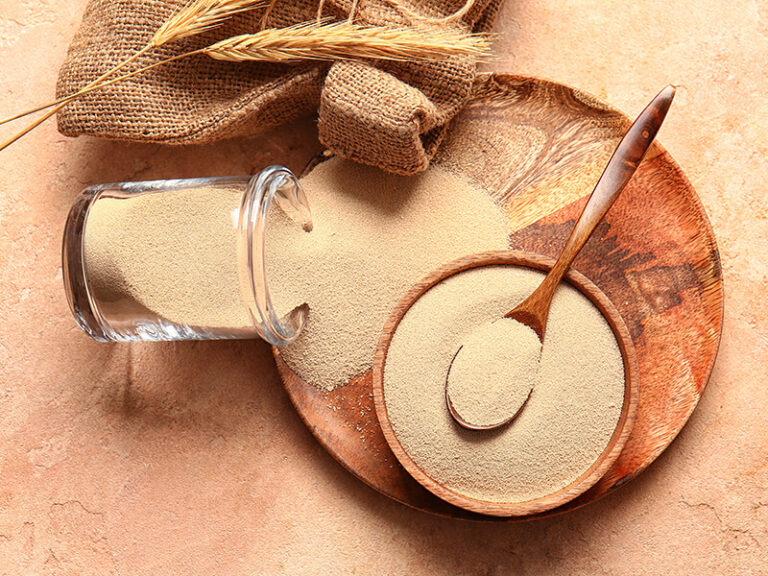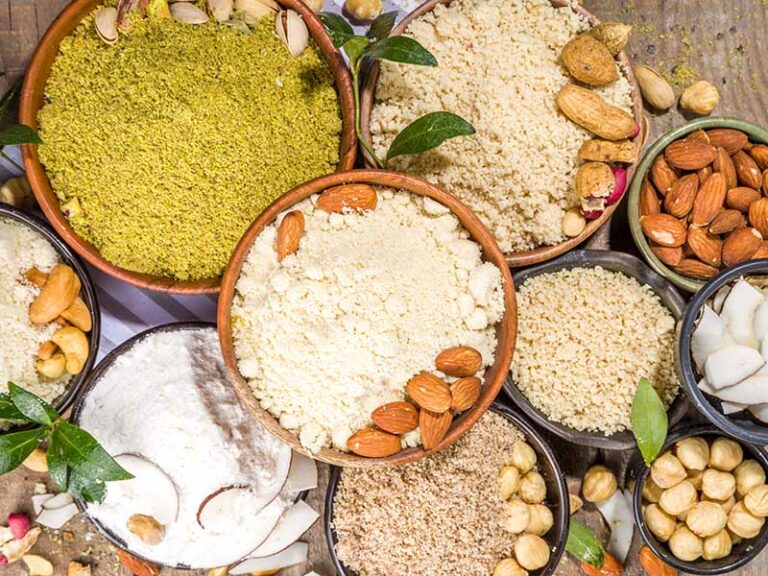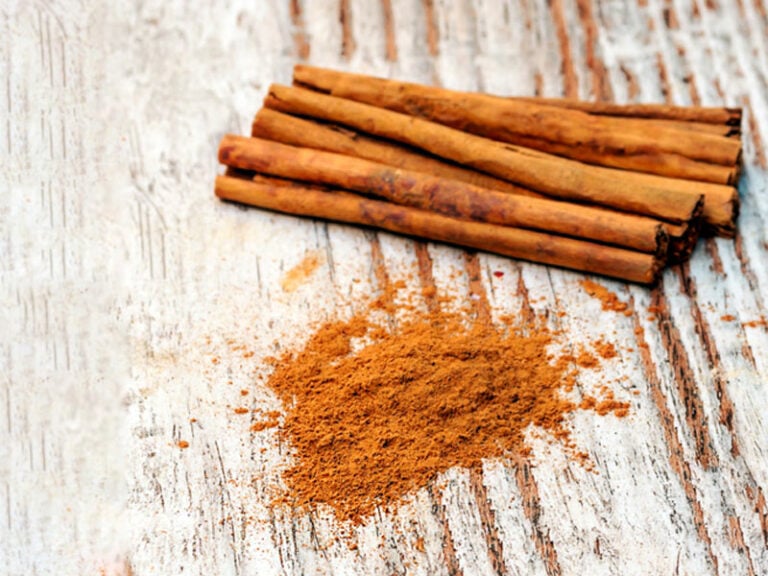Cornstarch vs baking powder? You may already know what their primary uses are. Cornstarch helps thicken your soups, whereas baking powder gives you the fluffiest cakes.
But have you ever tried swapping their place? If the answer is no, let me do the job for you. In this article, I will present how different cornstarch is compared to baking powder and what will likely happen if you substitute them for each other.
You will also have the chance to know these ingredients better regarding how they work, how long they last, and the nutrients they offer.
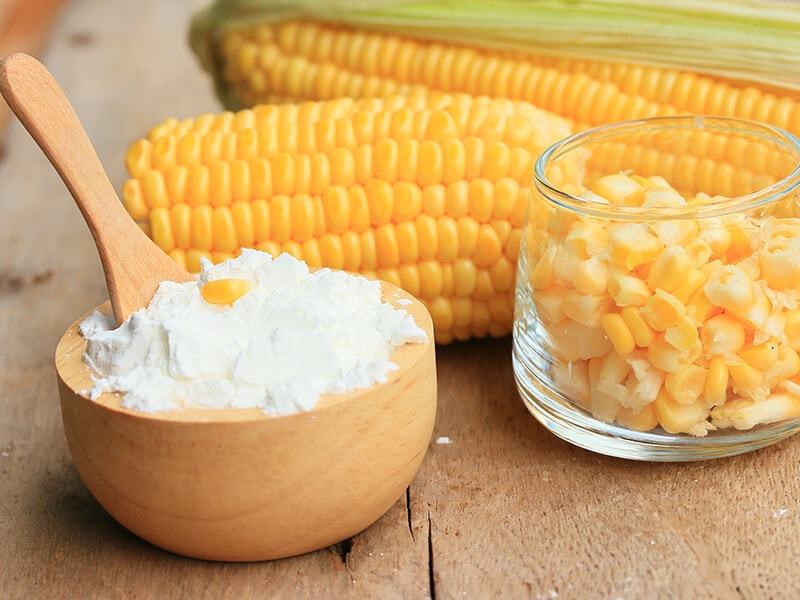
An Overview Of Cornstarch
Cornstarch is extremely popular with many home cooks. Perhaps you have already tried it on your dishes once. But do you know how exactly cornstarch works? Let me show you!
Cornstarch Comes From The Core Of Corn Kernels
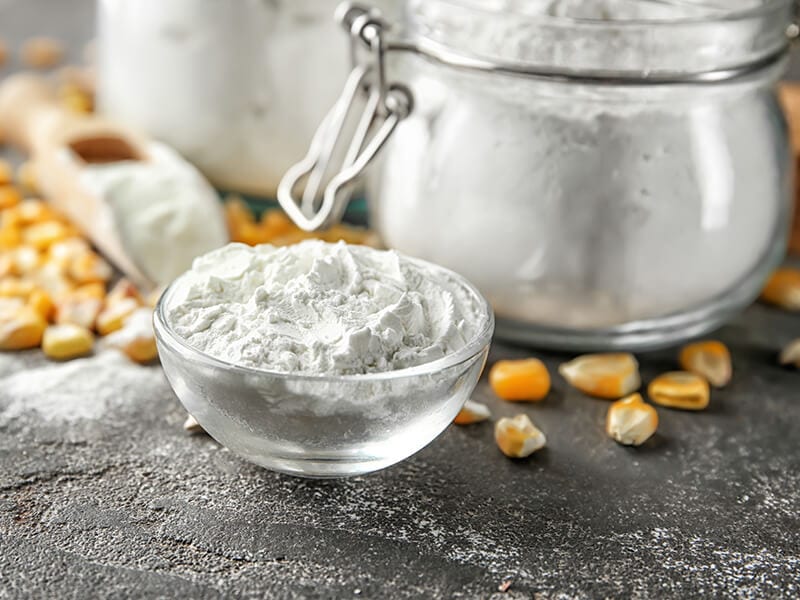
Developed in New Jersey in 1844, cornstarch is now an important ingredient in many cuisines worldwide. In England, people refer to it as cornflour.
Cornstarch has a powdery texture with no odor or taste. It derives from the endosperm of corn. Therefore, the powder only contains carbohydrates and is gluten-free.
The production of cornstarch includes soaking the corn kernels in a liquid, removing the endosperm, extracting the starch, and finally, drying.
People use cornstarch to thicken the liquid. It blends smoothly in water and creates a shiny effect, making your dishes more appealing. In addition, cornstarch can make a great coating for your deep-fried foods.
The uses of cornstarch even go beyond cooking. It appears in the production of salad dressing, canned food, and even baby food. You might come across cornstarch as an ingredient in antibiotic and cosmetic products.
You can use cornstarch to make a KFC gravy at home to pair with crunchy chicken wings.
How Cornstarch Thickening Your Dishes
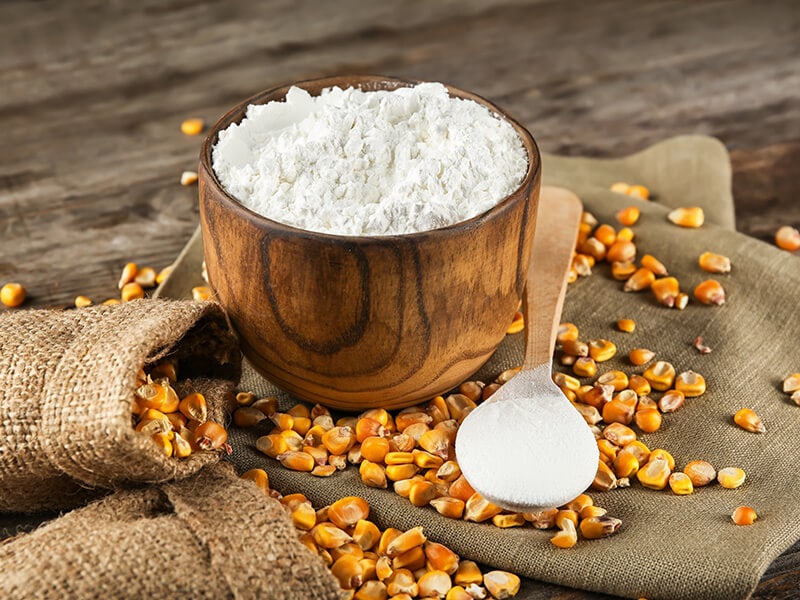
When you mix cornstarch with a liquid, the powder absorbs water and swells up to form a thick texture. The more water the starch granules absorb, the thicker your liquid is.
Cornstarch molecules expand and bond together faster when heated than at room temperature. This may cause lumps in your hot dishes.
To prevent that, mix the cornstarch with cold water until it blends. Then, gradually pour it into your hot liquid. At 150 degrees F, cornstarch starts thickening and reaches its peak at 180 degrees F.
You need to stir it well since cornstarch may distribute unevenly. If you don’t, your dishes may end up with a big cluster.
General Information About Baking Powder
Baking powder is an inexpensive ingredient with wide applications in cooking. If you bake frequently, this product is a must in your kitchen.
Baking Powder Contains Cornstarch
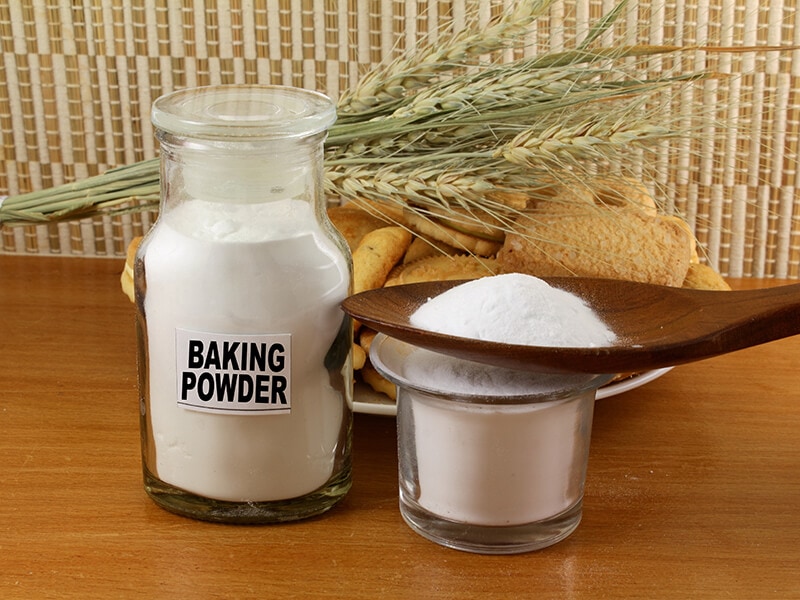
Baking powder appears in the form of white, dry, and odorless powder. It is a leavening agent that works by generating chemical reactions.
When it comes to flavor, most people refer to it as neutral. The ingredients of baking powder are baking soda (sodium bicarbonate) as a base, cream of tartar (a dry acid), and cornstarch.
Cornstarch in baking powder acts as a buffering factor. It helps prevent the base from reacting prematurely with the acid by absorbing the moisture.
You can also make your baking powder at home using this formula: 1 part of baking soda, 1 part of cornstarch, and 2 parts of cream of tartar.
How Baking Powder Makes Your Cake Rise
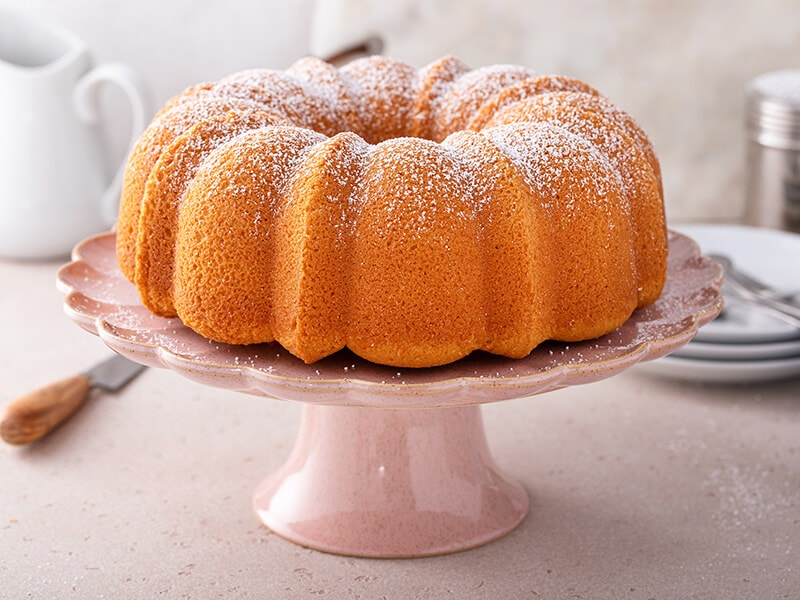
Once baking powder comes into contact with liquid, a chemical reaction happens and releases carbon dioxide. This compound increases the volume of the mixture and lightens its texture. It also makes cakes and cookies brown evenly.
There are two types of baking powder: single-acting and double-acting varieties. Single-acting baking powder will release the gas as soon as you mix it with liquid. If you don’t cook it quickly, it will be flat.
Double-acting type is a most commercial baking powder. As its name suggests, there are two reactions when you use it. The first one is releasing a small gas amount during mixing, and the second is the reaction with heat.
Baking Powder And Cornstarch Cannot Replace Each Other!
Although baking powder consists of cornstarch, adding it to a recipe that calls for cornstarch is not a smart choice. There are some significant differences between them. To have a better understanding, take a look at the table below.
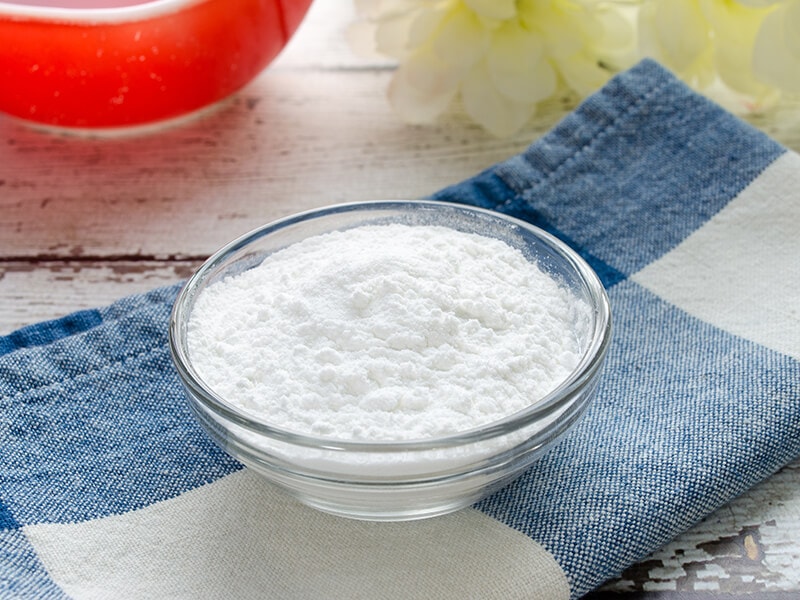
Culinary Uses
The main difference between cornstarch and baking powder is their use. While cooks use cornstarch as a thickener, baking powder is specially made to leaven foods.
Cornstarch Is A Thickening Agent
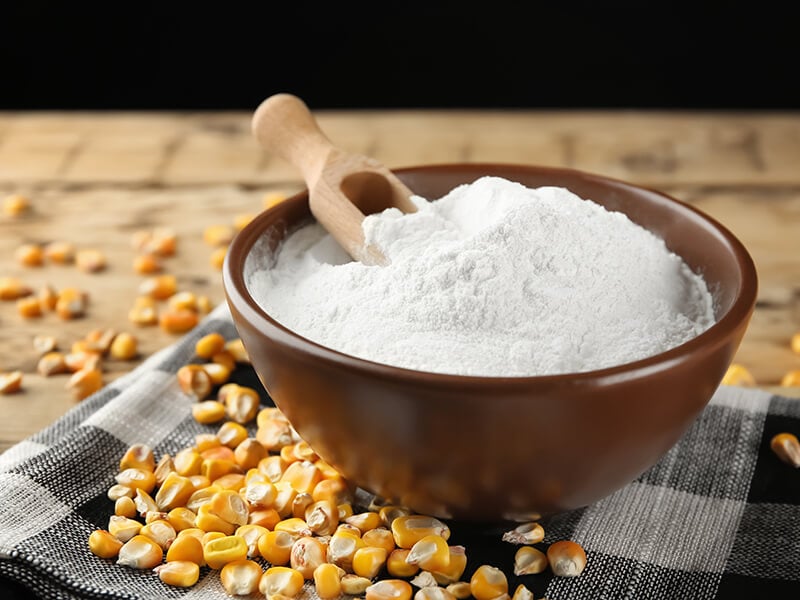
Cornstarch is a versatile substance. You can use it to make both sweet and savory dishes. For desserts, mixing cornstarch and flour can create a chewy texture.
But mostly, it is a thickening agent for gravies, soups, and sauces. Cornstarch is also an ingredient for corn syrup, along with other sugar.
Another common use of cornstarch is to coat food for frying purposes. This ingredient has a higher amylose content than wheat, so it’s better at making crispy coatings.
However, cornstarch does not perform well at leavening foods. It can make your cake lighter but doesn’t promote rising in texture.
Baking Powder Is A Leavening Agent
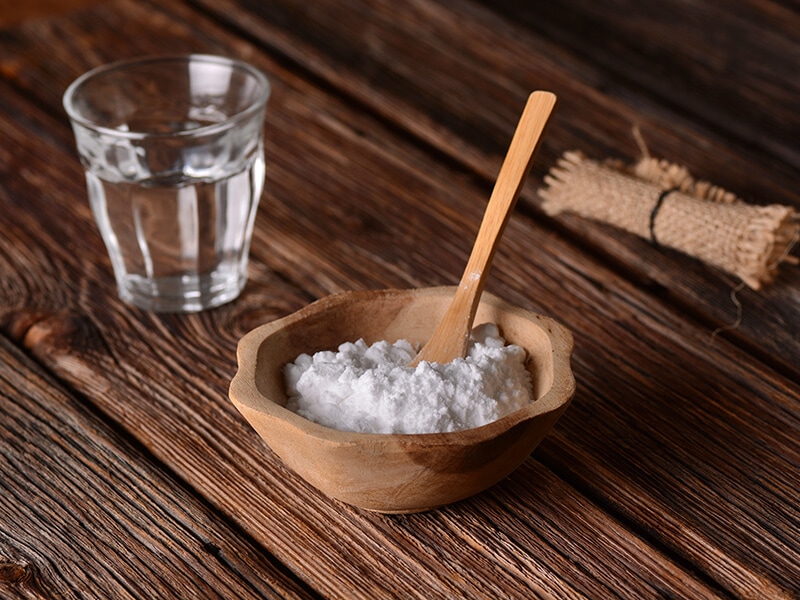
Despite having cornstarch as an ingredient, baking powder can not cause the same thickening effect. It’s simply because the amount of cornstarch in it is not enough.
The primary use of baking powder is to help baked goods rise. Therefore, it works well with cakes, cookies, muffins, etc. In addition, its leavening property is perfect for American-style dumplings, Middle Eastern falafel, or even fried foods.
Baking powder has a neutral flavor, sometimes even salty. This can make your soups taste different from what they should have. And if you use it in large quantities, your dishes may have a bitter, sour, or salty taste.
Nutrition
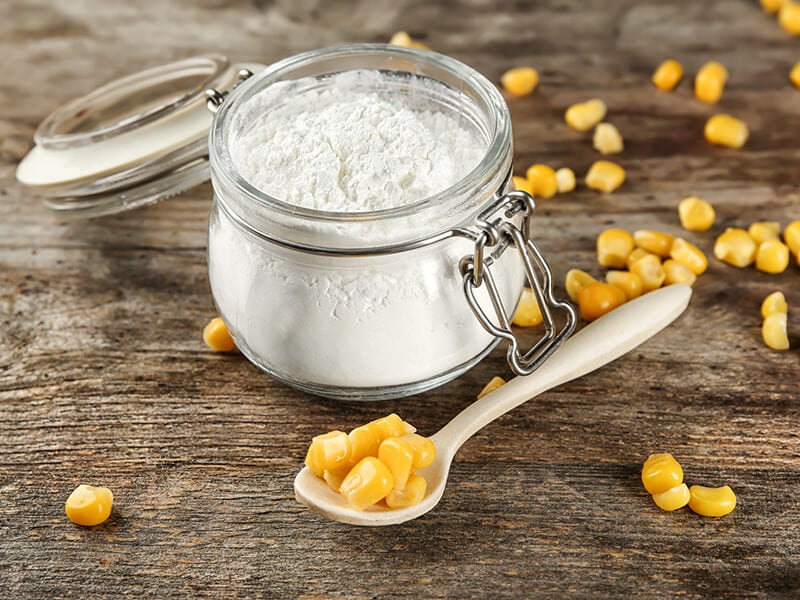
Cornstarch also differs from baking powder in terms of nutrition. The table below will show you the specific amount of nutrients in every 100 grams of each type.
Most nutrients in corn don’t lie in the endosperm. Therefore, cornstarch lacks nutrition. Yet, it is a good source of calories.
Starch is the main carbohydrate source of corn, making up 28-80% of the corn’s dry weight (1). Cornstarch is higher in calories due to carbohydrates. It is also superior to its counterpart in protein and water content.
When consuming cornstarch, your digestive system breaks down starches into glucose and transports them through the bloodstream for use as energy. For people with gluten intolerance, cornstarch can be a substitute for wheat flour.
Baking powder, however, has more fat and dietary fiber. It completely outweighs cornstarch in minerals. These substances can assist kidney function, improve oral health and even strengthen muscular endurance.
In addition, the calcium and phosphorus content in baking powder can play a role in keeping your bone, teeth, and nails healthy.
Shelf Life
The difference between cornstarch and baking powder comes from their shelf life too. While cornstarch has an indefinite shelf life, baking powder can only maintain its quality for a certain time.
Cornstarch Lasts Forever
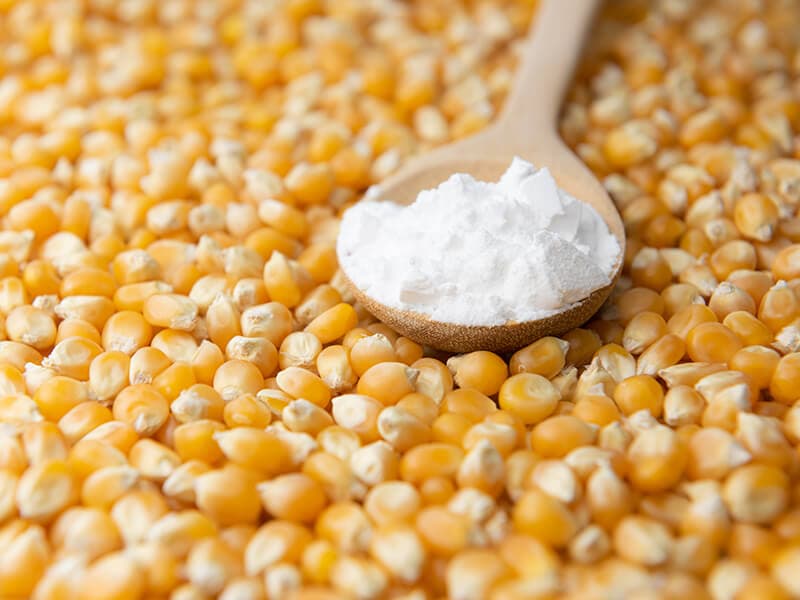
The water content in the cornstarch is very low, giving no chance for bacteria to grow. Cornstarch also does not lose its potency. You can keep it forever if no mold or bugs enter the jar and degrade it.
The nature of cornstarch is absorbing moisture. Keeping it near ambient humidity will create clumps in the ingredient and eventually ruin it. It is also sensitive to heat, so avoid that too.
Storing cornstarch is as easy as storing any flour. You’ll only need a resealable container. Then, place it in your pantry and keep an eye on the bugs.
Baking Powder Can Go Bad
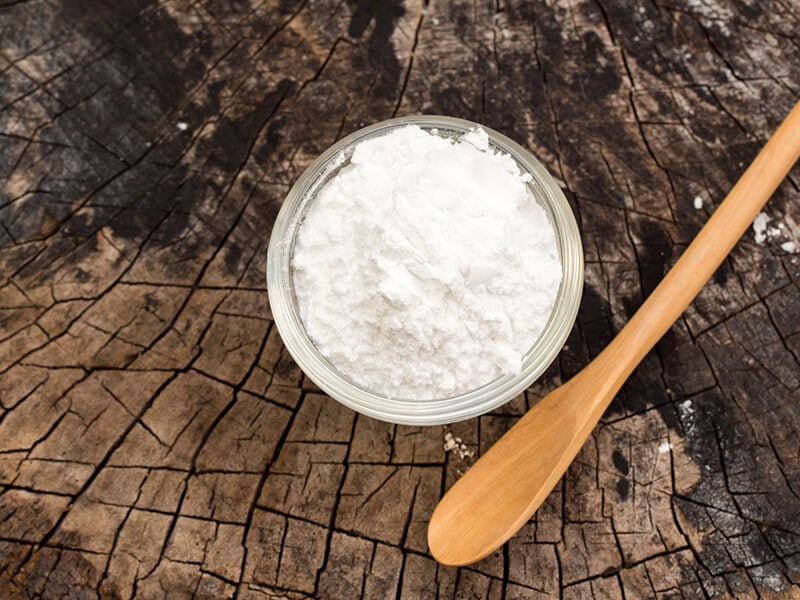
Baking powder is usually affected by contamination, which occurs when you use a measuring spoon in other food before dipping in the powder. The result is the loss of leavening ability in your powder.
Normally, baking powder is at its best from 18 to 24 months (2). After that, it’s hard to tell whether it has gone bad just by appearance. So, I suggest testing the baking powder first.
Just scoop out a teaspoon of baking powder and place it in a cup of water. If there are bubbles, the powder is safe. Otherwise, you should buy a new package.
Remember to keep the baking powder in an airtight container and store it in a cool, dark place without moisture. Don’t store the baking powder in the fridge, as the condensation will destroy your ingredients.
Don’t know how to test for active baking powder? This tutorial will show you.
The Most Common Cornstarch Alternatives
Cornstarch’s primary use is to create a thick consistency for your dishes without affecting their flavor. Therefore, any ingredient that results in the same outcome can be its alternative.
Potato Starch
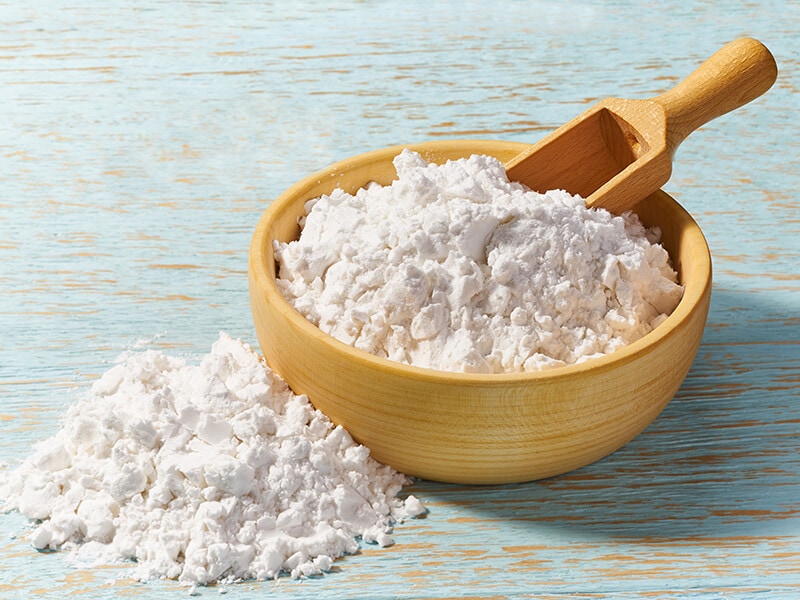
Potato starch is a great substitute for cornstarch. It has a neutral flavor and performs incredibly well in terms of thickening. However, potato starch can not stay thick for long and tends to form lumps more than cornstarch.
The good news is that you don’t have to make any calculations. Just use the same amount as you would with cornstarch.
Wheat Flour
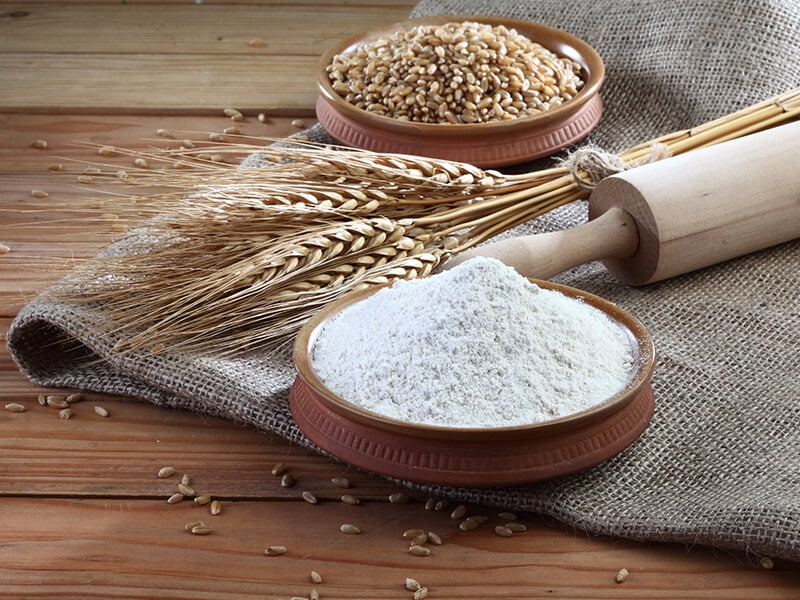
Wheat flour does not have as much starch as cornstarch. As a result, you should increase its quantity to get the same consistency.
Specifically, you need 2 teaspoons of it to compensate for 1 teaspoon of cornstarch. Remember that wheat flour contains gluten, so it’s unsafe for people with gluten tolerance.
Rice Flour
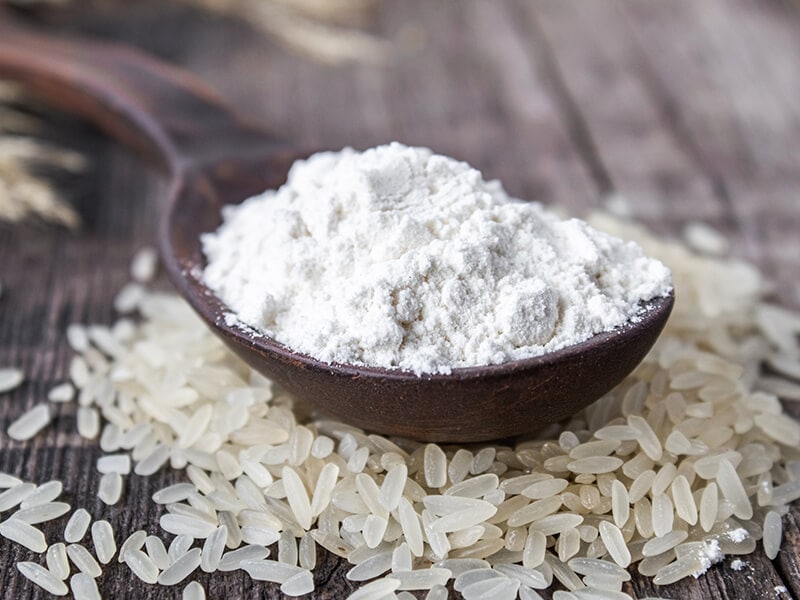
When rice flour dissolves in water, it results in a colorless solution, making it one of the best alternatives for cornstarch in clear liquids. Besides, rice flour is also a safe option for a gluten-free diet.
If rice flour is unavailable in your kitchen, you can grind white rice in a spice processor or blender. It is gluten-free and creates the same effect as cornstarch. You should double the amount of this starch when cooking in recipes calling for cornstarch.
Try using a blender to make rice flour; the result won’t let you down.
Arrowroot Powder
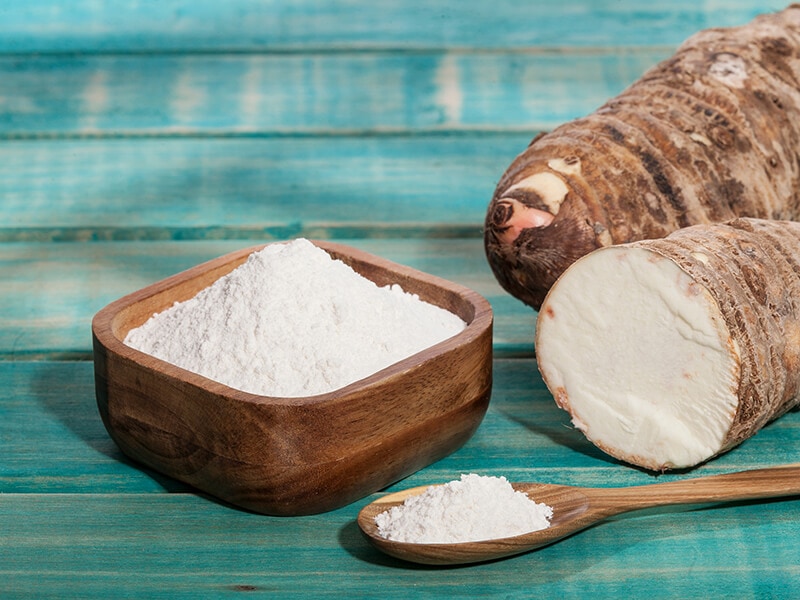
Like rice flour, arrowroot powder is gluten-free and forms a clear gel when mixed with water. It will give your sauce a shiny look and a similar texture to cornstarch with a double quantity.
However, since arrowroot is not so affordable, you may want to look for another type when you need a large amount.
All-Purpose Flour
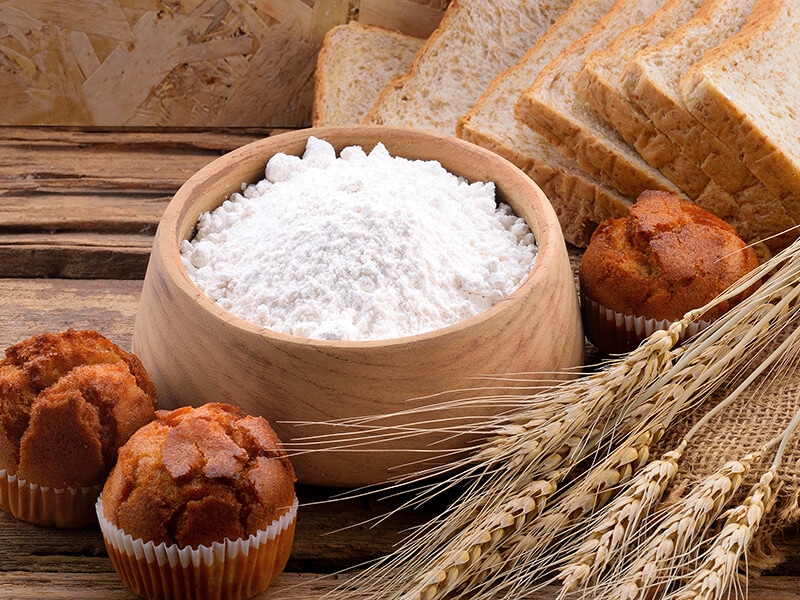
Another alternative for cornstarch in thickening pie fillings or sauces is all-purpose flour. Nevertheless, this type does not have strong thickening properties like cornstarch. You should use 2 teaspoons of it for every 1 teaspoon of cornstarch.
Tapioca Starch
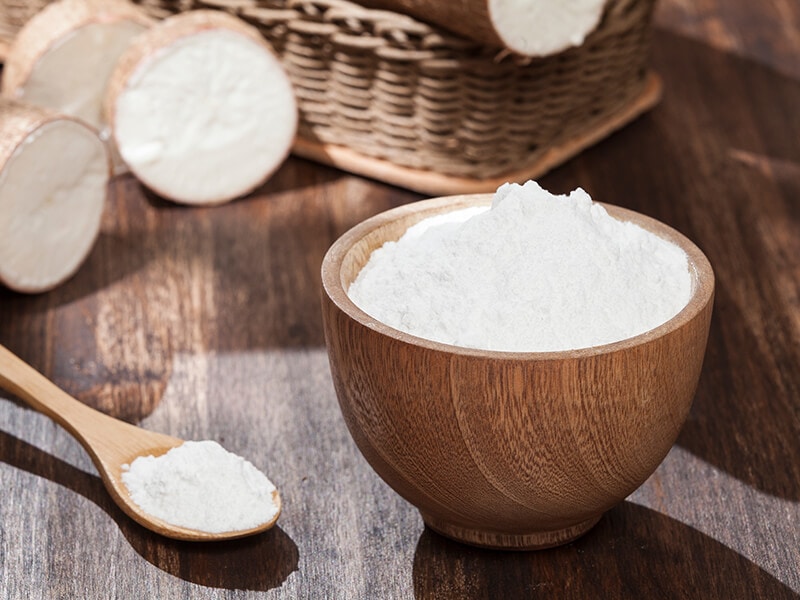
Tapioca starch (or tapioca flour) comes from cassava root. It’s best to use as a replacement for cornstarch in baking recipes.
However, this flour can’t replace cornstarch in boiling since it can make your sauces stringy. Like all-purpose flour, tapioca starch is a two-for-one cornstarch substitute.
Try These Substitutes When You Don’t Have Baking Powder
The basic rule to make baking powder is to combine an acid with sodium bicarbonate. Thus, if you have baking soda and an acidic ingredient, you can produce a leavening agent with equivalent properties.
Lemon Juice
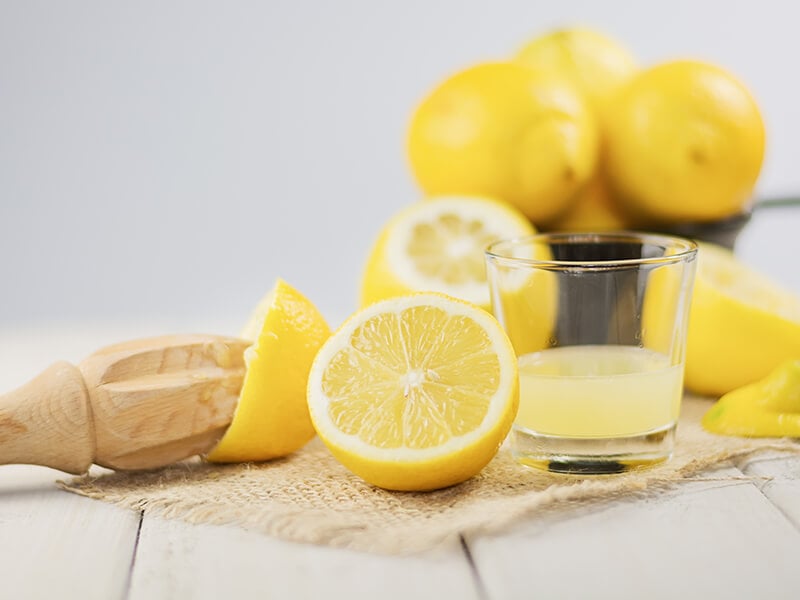
This juice is very acidic. Its acidity can trigger a reaction with baking soda, which produces the needed carbon dioxide to leaven the food.
Unfortunately, because its flavor is strong, you should use it in a recipe that requires a small amount of baking powder. For every teaspoon of baking powder, use half a teaspoon of lemon juice and ¼ teaspoon of baking soda.
Vinegar
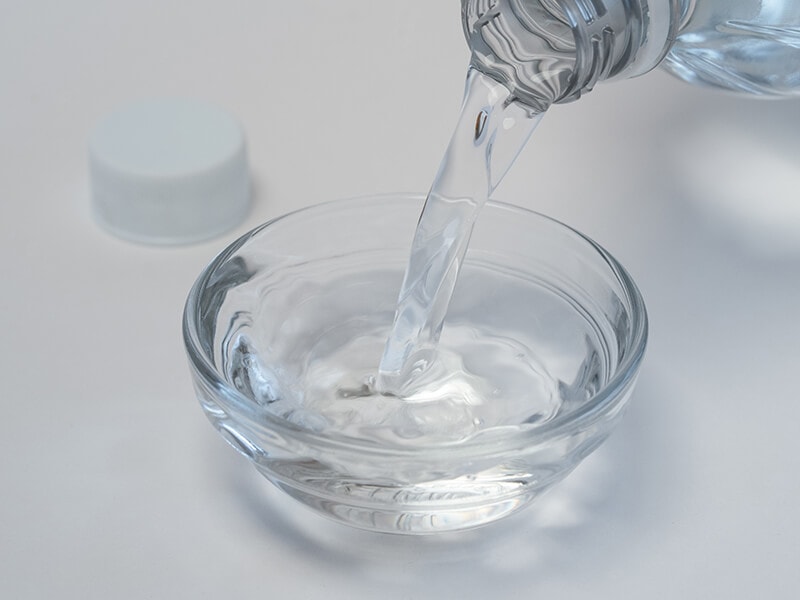
The acidic pH level in vinegar is ideal for a baking powder substitute, especially in cake or cookie recipes.
You can use any type of vinegar, but white vinegar will give you the most neutral taste. Moreover, it will not cause any discoloration in your foods. Replace a teaspoon of baking powder with ½ teaspoon of vinegar and ¼ teaspoon of baking soda.
Cream Of Tartar
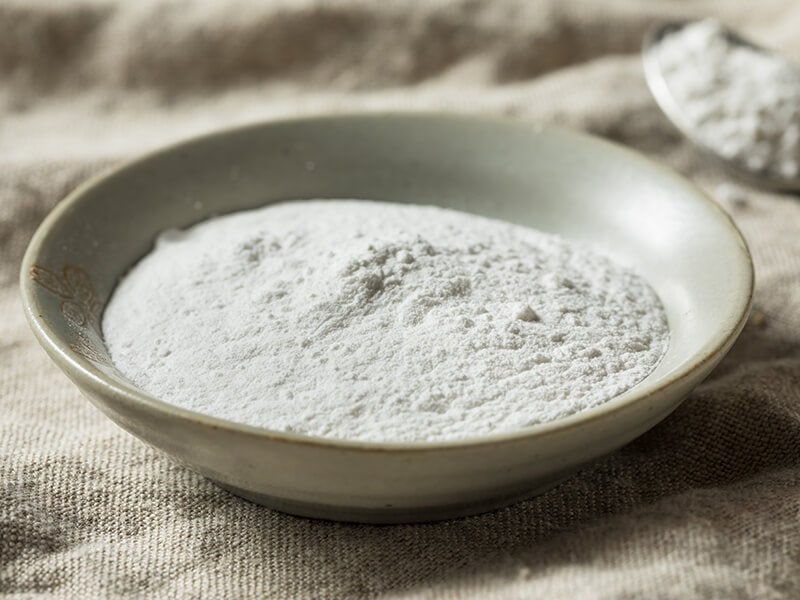
Cream of tartar is a dry, powdery form of tartaric acid – a byproduct of winemaking. Its common functions are stabilizing egg whites and creams, preventing sugar crystals, and baking goods.
Most baking powder recipes include cream of tartar, so you can whip up homemade baking powder using this ingredient and baking soda. Mix ½ teaspoon of cream of tartar and ¼ teaspoon of baking soda to substitute a teaspoon of baking powder.
Buttermilk
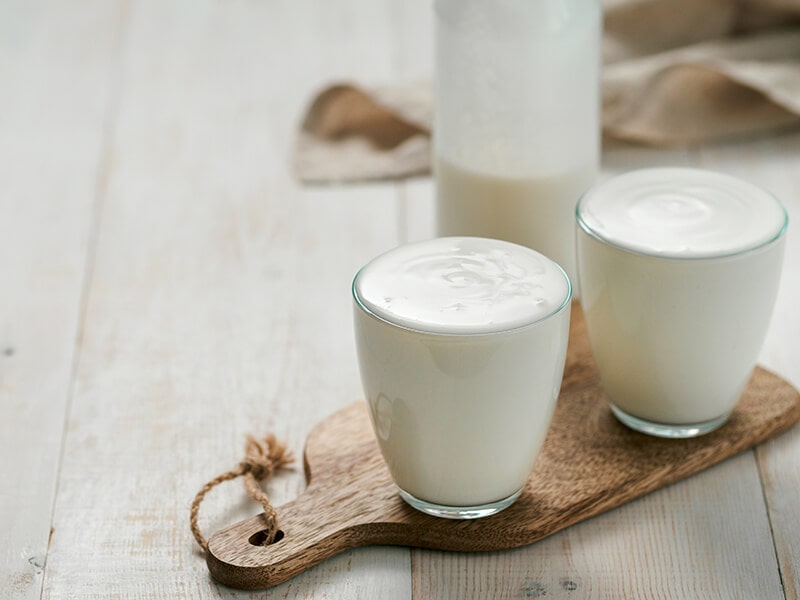
The acidic nature of buttermilk is exactly what you need as an ingredient for baking powder. To make a conversion, you need half a cup of buttermilk and a quarter teaspoon of baking soda.
One thing you should pay attention to is the volume of your recipes. It can be affected by buttermilk, so make sure to adjust the volume of other liquids properly to maintain your dish’s consistency.
Plain Yogurt
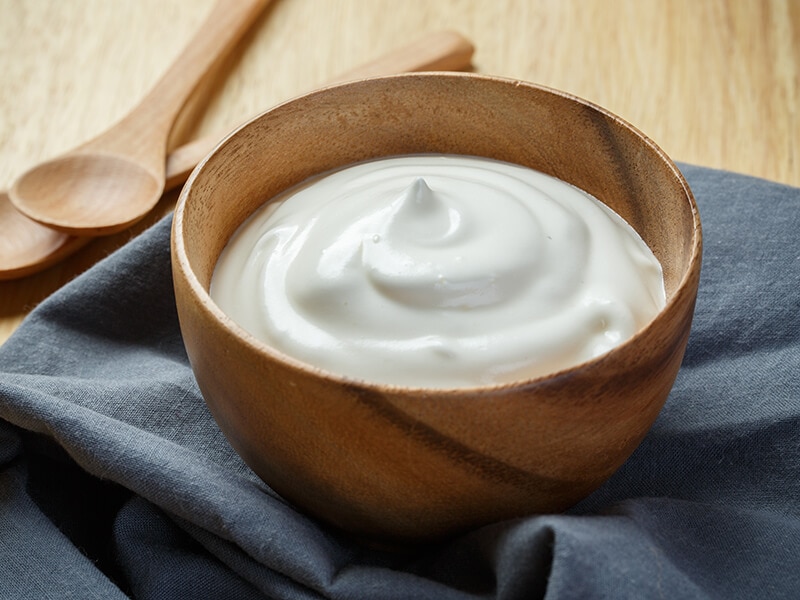
Plain yogurt provides enough acidity for leavening without adding any flavor. When mixed with baking soda, it makes a perfect substitute for baking powder.
For one teaspoon of baking powder, blend ¼ teaspoon of baking soda and half a cup of plain yogurt. Nonetheless, plain yogurt is a liquid. Adding it to your recipe means you have to decrease the same amount of liquid from other ingredients, such as milk or water.
Self-Rising Flour
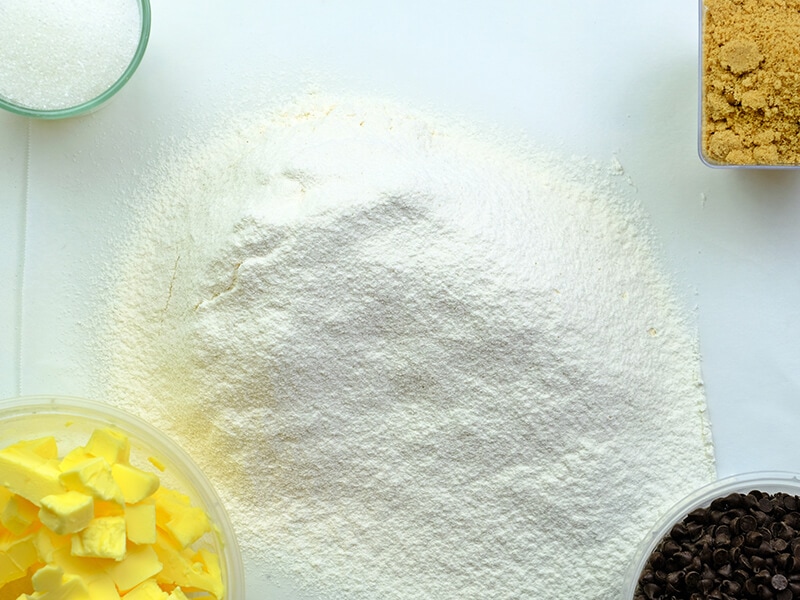
If you have neither baking powder nor baking soda, try self-rising flour. It is a mixture of salt, all-purpose flour, and baking powder. Since self-rising flour already has baking powder, your food can rise without adding any other leavening agent.
For every cup of self-rising flour, you are substituting 1 cup of all-purpose flour, 1 teaspoon of baking powder, ¼ teaspoon of baking soda, and ½ teaspoon of salt. This alternative works extremely well for cookies, quick bread, or cakes.
Making biscuits with self-rising flour is simple because you don’t have to mix all kinds of flour.
Molasses
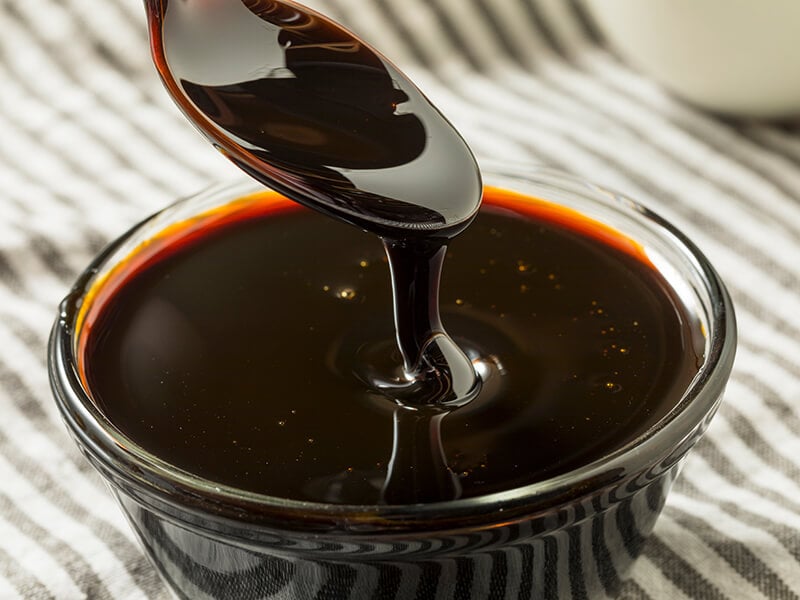
Molasses is a dark, thick syrup that comes from sugarcane or sugar beets. People crush these plants to extract the juice and then boil it down until forming sugar crystals.
A quarter cup of molasses and ¼ teaspoon of baking soda will make up a teaspoon of baking powder. But since molasses is a sweetener, you have to consider reducing the amount of sugar in the whole dish.
FAQs
When it comes to cooking ingredients, the better you master them, the better the dish will turn out. So, find out more about baking powder and cornstarch in the section below.
Cornstarch And Baking Powder Are Best At Their Intended Purpose
Both cornstarch and baking powder are amazing ingredients that every cook should have. With the thick texture that cornstarch gives, your soups look more appetitive than ever. Meanwhile, baking powder can ensure your baked goods will rise high.
However, you cannot swap their places in terms of primary use. Cornstarch won’t make your food leaven, while baking powder does not thicken your liquids. After all, these products are created for their specific purpose.
After reading this post, I guess you have found the answer you’ve been looking for. If it is that helpful, why don’t you leave a comment to let me know? And make sure the information can reach a wider reader community by sharing it.
References
- Healthline.com (2019), Corn 101: Nutrition Facts and Health Benefits
- Canr.msu.edu (2018), Rising ingredients: baking powder and baking soda

